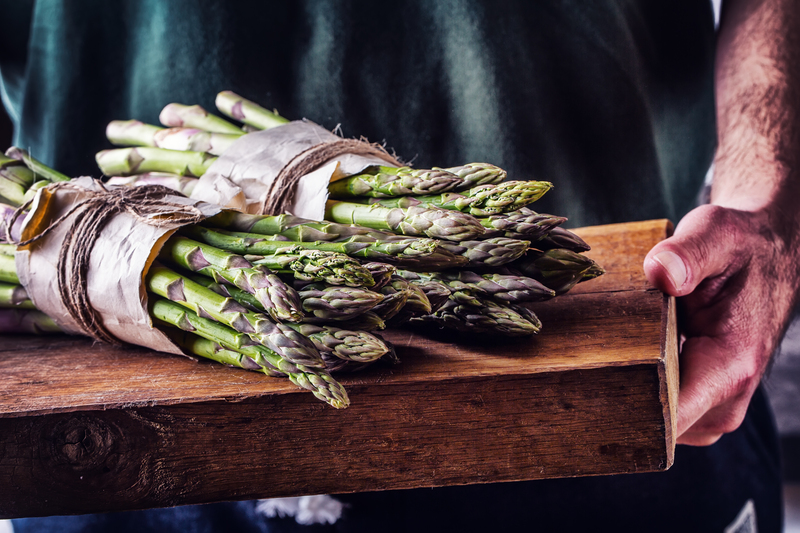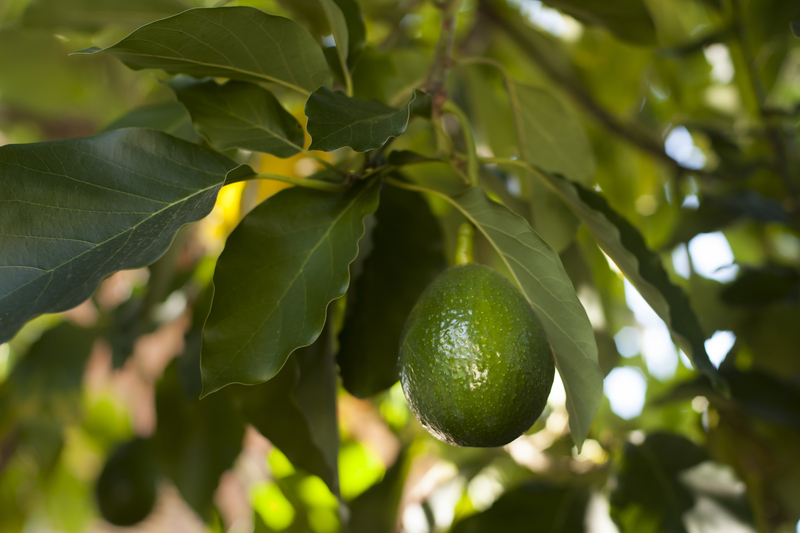Digging Deep: How Gardening Aids Climate Resilience
Posted on 27/08/2025
Digging Deep: How Gardening Aids Climate Resilience
Climate change is no longer a distant concern--it's unmistakably reshaping our world today. From scorching summers to relentless droughts and more frequent storms, the urgency for practical, community-driven solutions has never been higher. Among these solutions, an age-old activity is proving surprisingly powerful: gardening. This comprehensive guide will explore how cultivating gardens not only enhances personal wellness and food security but also builds robust climate resilience for individuals and communities alike.
The Link Between Gardening and Climate Resilience
Before delving into the specifics, let's clarify what climate resilience means. It refers to the capacity of people, communities, and ecosystems to anticipate, prepare for, respond to, and recover from hazardous events or disturbances related to climate. Gardening for climate resilience involves a suite of sustainable practices that mitigate environmental harm and help adapt to ongoing climate changes.
The Power of Localized Action
Every plot of earth, balcony box, or rooftop garden can become a frontline defense against the impacts of a changing climate. By leveraging gardening to build climate resilience, individuals and communities can:
- Reduce urban heat, acting as natural air conditioners
- Absorb rainwater and diminish flooding
- Enhance biodiversity and nurture pollinators
- Increase local food production, thus lowering transportation emissions
- Improve soil health, sequestering carbon and supporting clean water
Let's dig deeper into these gardening climate resilience strategies and the science behind them.

Gardening as an Engine for Climate Mitigation
1. Carbon Sequestration Through Healthy Soil
One powerful way gardening aids climate resilience is by sequestering carbon in the soil. Plants draw in atmospheric carbon dioxide (CO2) during photosynthesis, storing it in roots, stems, and organic matter. With regenerative gardening techniques like composting, no-dig beds, and regular mulching, gardeners help lock away even more carbon beneath the surface.
Benefits of Soil Carbon Sequestration:
- Reduces greenhouse gases in the atmosphere
- Increases soil fertility and water retention
- Improves plant health and yields
2. Cooling Cities with Urban Gardening
Urban heat islands are a growing problem, where concrete and asphalt surfaces raise city temperatures. Planting trees, shrubs, and green spaces can reduce local temperatures by several degrees. Gardens provide shade and transpiration--evaporating water from leaves--which cools the surrounding area and lessens reliance on energy-intensive air conditioning.
Impactful Strategies for Urban Climatic Comfort:
- Planting street trees and vertical gardens
- Creating green roofs and wall gardens
- Expanding community parklets and edible landscapes
3. Supporting Biodiversity and Ecological Health
Resilient gardens go beyond aesthetics--they act as mini wildlife refuges in urban and suburban settings. Diverse plantings attract pollinators, birds, beneficial insects, and soil microorganisms, all of which strengthen the ecosystem's capacity to bounce back from climate extremes.
Key gardening practices to bolster biodiversity:
- Planting a variety of native and adaptive species
- Choosing pollinator-friendly flowering plants
- Minimizing or eliminating pesticide use
- Incorporating habitats such as logs, stones, or small ponds
Gardening for Climate Adaptation
1. Water Management and Flood Reduction
Climate change brings heavier downpours and extended droughts. Gardens act like sponges, catching and absorbing rainfall that might otherwise become flooding runoff. Techniques such as rain gardens, swales, and mulch-based beds help slow, store, and filter water, reducing stress on municipal drainage systems and recharging aquifers.
Effective Water Management Strategies:
- Installing rain barrels or cisterns to harvest roof runoff
- Building permeable paths and surfaces to allow water infiltration
- Planting deep-rooted perennials for maximum water uptake
- Creating swales (shallow ditches) to direct and absorb water
2. Food Security in an Uncertain Climate
Global food systems are increasingly vulnerable to climate disruptions such as drought, heatwaves, and supply chain breakdowns. Growing your own food, even on a small scale, offers a buffer against shortages and empowers communities to take an active role in their own sustenance. Moreover, local food production slashes carbon emissions associated with transport, packaging, and cold storage.
Climate-smart edibles for the home garden include:
- Heritage crop varieties adapted to local conditions
- Drought-tolerant vegetables and grains
- Season extenders like row covers, cold frames, or shade cloths
3. Building Social Capital and Community Resilience
Gardening for climate resilience isn't just about plants--it's about people. Community gardens bring neighbors together to share knowledge, resources, and harvests. This social capital is crucial in times of climate crisis, when strong community bonds can mean faster recovery and greater adaptive capacity.
Ways gardens fuel social and climate resilience:
- Hosting workshops on sustainable gardening and conservation
- Organizing seed swaps and plant exchanges
- Fostering intergenerational mentorship and cooperation
- Providing accessible green space for recreation and stress relief
Gardening Techniques to Boost Climate Resilience
To fully harness the climate-buffering benefits of gardening, consider incorporating the following advanced but accessible techniques:
1. Mulching and Permaculture Practices
- Mulch conserves soil moisture, moderates temperature, and feeds soil microbes
- Permaculture design mimics natural ecosystems for resilience and productivity
- Interplanting and companion planting deter pests and minimize disease
2. Composting and Organic Amendments
- Home compost reduces landfill waste and cycles nutrients naturally
- Organic amendments (such as worm castings and leaf mold) boost soil structure
- Healthy soils store more carbon and become more drought/flood tolerant
3. Rainwater Harvesting
- Rain barrels and cisterns capture water for irrigation during dry spells
- Rain gardens slow, filter, and absorb stormwater runoff
- Using gravity-fed drip irrigation for water efficiency
4. Native Plant Landscaping
- Native plants are naturally adapted to local climates and resist pests and diseases
- They require less irrigation and fertilizer than exotic species
- They provide crucial habitat for pollinators and wildlife
Case Studies: Resilient Gardens in Action
How are people around the world using gardening to build climate resilience? Here are a few standout examples:
Detroit's Urban Farms
Amid economic hardship and urban decay, residents of Detroit have transformed vacant lots into thousands of productive urban farms and gardens. These spaces absorb rainwater, improve air quality, provide fresh produce, and foster inclusive community networks--proving resilience is not just possible but vibrant and fruitful.
Rain Gardens in Seattle
Facing increased rainfall and combined sewer overflows, Seattle implemented a city-wide rain garden program. Residents retrofitted their yards to absorb stormwater, preventing local flooding and protecting waterways. This green infrastructure has proven far more affordable and adaptable than traditional gray infrastructure approaches.
Agroecological Resilience in Sub-Saharan Africa
Farmers in regions highly vulnerable to drought and erratic rainfall are adopting agroecological principles--mulching, intercropping, cover cropping, and water harvesting--to stabilize food supplies and restore degraded lands. Community seed banks and farmer field schools ensure traditional knowledge is shared and preserved for future generations.
Overcoming Barriers to Gardening for Climate Resilience
Although the benefits are clear, there exist real challenges to using gardening as a tool for climate adaptation:
- Lack of land ownership or affordable access
- Soil contamination in urban environments
- Limited gardening knowledge or resources
- Water scarcity or local restrictions
Solutions often involve creative partnerships among local governments, nonprofits, and activists--for example, converting underutilized city land into community plots, subsidizing soil testing and remediation, running free gardening classes, and supporting water-wise gardening initiatives.
The Future of Gardening: Digging Even Deeper
As climate change challenges intensify, the humble act of gardening is gaining global recognition as a critical pillar of climate resilience. Whether you're transforming a single balcony or collaborating on a city-spanning community garden, you are part of a movement that restores ecosystems, empowers people, and prepares us all for an unpredictable future.
Beyond food and beauty, gardens heal and defend our communities in an age of uncertainty. By digging deep--literally and figuratively--we anchor ourselves in resilient soil that can weather storms, absorb shocks, and bloom anew.

Get Started: Your Climate-Resilient Gardening Checklist
- Test your soil and add organic matter for fertility and carbon storage
- Choose water-wise, drought-tolerant, or native plants
- Install rain barrels or rain gardens for water management
- Embrace diverse plantings to attract pollinators and beneficial wildlife
- Join or support a local community garden initiative
- Share learnings and harvests to strengthen neighborhood resilience
Conclusion: Rooted Resilience Through Gardening
In the unfolding story of climate adaptation, gardening for climate resilience stands out as a solution that is as local as your backyard and as global as food and habitat security. With every shovel of compost and each seed planted, we move towards healthier, more resilient communities. Start today, and watch your garden--and your world--thrive despite climate uncertainties.
Digging deep for climate resilience isn't just about preparing the earth. It's about preparing ourselves, our communities, and our future.



